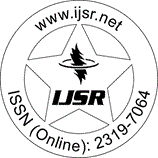Downloads: 5
Iraq | Medicine | Volume 13 Issue 12, December 2024 | Pages: 1387 - 1397
Association between Asymptomatic Hyperuricemia and Knee Osteoarthritis
Abstract: Background: knee osteoarthritis is one of the most prevalent chronic conditions in older individuals which impairs function, negatively impacts quality of life, and can occasionally result in disability. One metabolic condition that is frequently discovered in older persons is asymptomatic hyperuricemia. Research has indicated that asymptomatic hyperuricemia is also prevalent in patients with knee osteoarthritis. The two disorders are believed to be pathophysiologically connected due to cartilage destruction brought on by uric acid, and they share some risk factors, such as advanced age and increase in Body Mass Index (BMI). Objective: To explore the relationship between asymptomatic hyperuricemia and knee osteoarthritis among Iraqi Hospital outpatients. Patients and Methods: This cross - sectional study included 250 Iraqi outpatients (125 patients with knee osteoarthritis and 125 indiviiduals without knee osteoarthritis) aged 80 - 40)) years (mean age 52.51? 7.71 years) visiting rheumatologic outpatient clinic at Baghdad Teaching Hospital from December 2023 until September 2024. Data from both groups' were collected, including demographics, symptoms and signs of knee osteoarthritis, serum uric acid levels, and knee radiographs. The correlation between asymptomatic hyperuricemia and knee osteoarthritis was investigated using logistic regression. Results: patients with knee osteoarthritis had a higher mean serum uric acid level Compared to individuals without knee osteoarthritis (5.98? 1.34 mg and 4.99?1.05 mg P <0.001) respectively. The prevalence of hyperuricemia was higher in older outpatients with knee osteoarthritis than in those without knee osteoarthritis (30.4% vs.5.6%, p = <0.001). Asymptomatic hyperuricemia and knee osteoarthritis were still significantly associated after controlling for age, sex, body mass index (BMI), and other comorbidities (odds ratio [OR3.17], 95% confidence interval [CI] 2.18 - 6.99, p = 0.007). Subgroup analyses based on BMI and sex categories were conducted and revealed a significant association between asymptomatic hyperuricemia and knee osteoarthritis among men and women (p=<0.001 and p=<0.004) respectively, and among individuals who were normal - weight and obese according to BMI (p = 0.009 and p=<0.001) respectively. Conclusions: Asymptomatic hyperuricemia is one of the most prevalent comorbidities among elderly outpatients with knee osteoarthritis. Among Iraqi outpatients, an independent correlation between asymptomatic hyperuricemia and knee osteoarthritis was noted; however, this correlation may be influenced by confounding variables such as sex and BMI.
Keywords: Asymptomatic hyperuricemia, Knee Osteoarthritis, Risk Factors, Serum Uric acid
How to Cite?: Sajad Ahmad Majdi, Ziad Shafeeq Al-Rawi, "Association between Asymptomatic Hyperuricemia and Knee Osteoarthritis", Volume 13 Issue 12, December 2024, International Journal of Science and Research (IJSR), Pages: 1387-1397, https://www.ijsr.net/getabstract.php?paperid=SR241221222046, DOI: https://dx.doi.org/10.21275/SR241221222046
